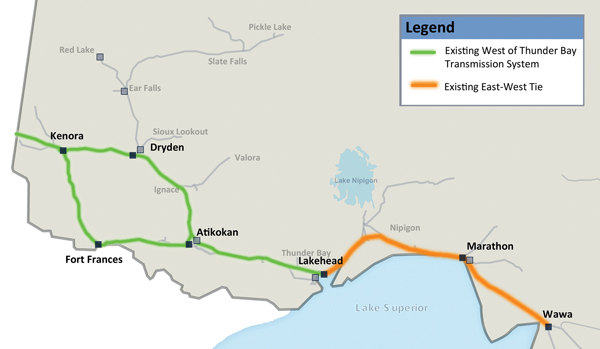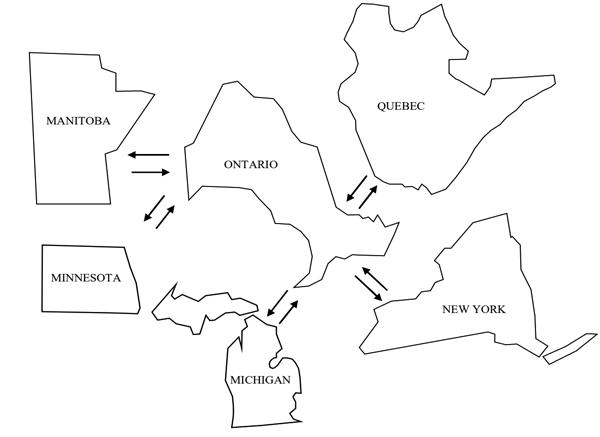Toronto: NextBridge Infrastructure, a partnership between affiliates of NextEra Energy Canada, Enbridge and OMERS Infrastructure, and Hydro One Networks Inc. (HONI) have both filed applications with the Ontario Energy Board to design, build and operate the new East-West Tie transmission line in western Ontario.
NextBridge was designated by the OEB to develop the EWT line in August of 2013. The company submitted its Leave to Construct (LTC) application for the project to the OEB on July 31, 2017. Hydro One Limited and Hydro One Inc. announced the HONI filing on February 15 of this year.
 The Preferred Route under both proposals primarily parallels the existing East-West Tie, a double-circuit 230-kV transmission line corridor, starting from Hydro One’s Wawa transformer station in the west and running through its Marathon TS and continuing to its terminus at Lakehead TS near Thunder Bay. NextBridge’s proposal, approximately 450 km long, avoids some sensitive features crossed by the existing line, including Pukaskwa National Park. Hydro One’s proposal, known as the Lake Superior Link, in part follows a narrower and shorter route through Pukaskwa Park thanks to the use of some existing Hydro One processes and infrastructure. Accordingly Hydro One says its proposal, costed at $636.2 million, will save $120 million in capital costs.
The Preferred Route under both proposals primarily parallels the existing East-West Tie, a double-circuit 230-kV transmission line corridor, starting from Hydro One’s Wawa transformer station in the west and running through its Marathon TS and continuing to its terminus at Lakehead TS near Thunder Bay. NextBridge’s proposal, approximately 450 km long, avoids some sensitive features crossed by the existing line, including Pukaskwa National Park. Hydro One’s proposal, known as the Lake Superior Link, in part follows a narrower and shorter route through Pukaskwa Park thanks to the use of some existing Hydro One processes and infrastructure. Accordingly Hydro One says its proposal, costed at $636.2 million, will save $120 million in capital costs.
Hydro One’s line will have a total transfer capacity of 450 MW by 2020, compared to the current 155-175 MW limit, and rising to 650 MW “when the need arises.”
 Ontario’s existing regional ties
A March 2016 Order-in-Council by the Ontario government declared the East-West tie project a priority, identified in the 2010 and 2013 Long-Term Energy Plans, with the objectives of maintaining a reliable supply of electricity in the province’s northwest, increasing operational flexibility, reducing congestion payments and removing a barrier to resource development in the region. The Order-in-Council requested an in-service date of December 2020, but Hydro One expects a one-year delay.
Ontario’s existing regional ties
A March 2016 Order-in-Council by the Ontario government declared the East-West tie project a priority, identified in the 2010 and 2013 Long-Term Energy Plans, with the objectives of maintaining a reliable supply of electricity in the province’s northwest, increasing operational flexibility, reducing congestion payments and removing a barrier to resource development in the region. The Order-in-Council requested an in-service date of December 2020, but Hydro One expects a one-year delay.
The line will cross the lands of six First Nation communities, with whom Hydro One says it has strong relationships and a well-established engagement process.
